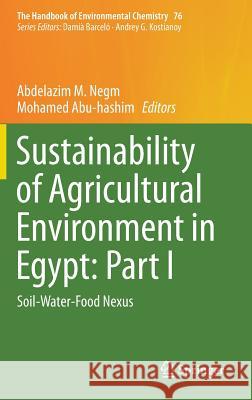Sustainability of Agricultural Environment in Egypt: Part I: Soil-Water-Food Nexus » książka
topmenu
Sustainability of Agricultural Environment in Egypt: Part I: Soil-Water-Food Nexus
ISBN-13: 9783319953441 / Angielski / Twarda / 2018 / 378 str.
Kategorie:
Kategorie BISAC:
Wydawca:
Springer
Seria wydawnicza:
Język:
Angielski
ISBN-13:
9783319953441
Rok wydania:
2018
Wydanie:
2019
Ilość stron:
378
Waga:
0.72 kg
Wymiary:
23.39 x 15.6 x 2.24
Oprawa:
Twarda
Wolumenów:
01
Dodatkowe informacje:
Wydanie ilustrowane











